Up Next

Three from four for Lewis Hamilton and Mercedes in this ongoing titanic struggle between them and Red Bull.
The two cars are now incredibly evenly matched but retain quite different traits, especially in the way they use their tyres.
The Red Bull gets them up to temperature quicker, the Mercedes keeps them in shape longer. On raw single-lap performance there was virtually nothing between them around Barcelona, but those tyre traits make how you go about winning a race against the other quite different.
Just as in Bahrain, Mercedes planned its whole weekend around having two sets of medium tyres available for the race. Red Bull did not and Max Verstappen had one set each of mediums and softs available – which seems in hindsight remiss. Because of the two cars’ natures, it’s the Red Bull which more urgently needs to have the longer-lasting tyres.
Verstappen chose to run far harder than what in hindsight was feasible for a one-stop in a Red Bull which is more aggressive on its tyres than a Mercedes
But there was a logic to Red Bull’s choice in real time. It’s only wrong in hindsight. In real time, this was expected to be a one-stop race, something the relatively low deg rates seen in Friday practice seemed to confirm. In which case, having two sets of new mediums available would be unnecessary, as one of them would never be used.
Secondly, a set of softs may have turned out to be the valuable, race-winning ace if it all came down to how fast your out-lap was if it did go to a two-stop.
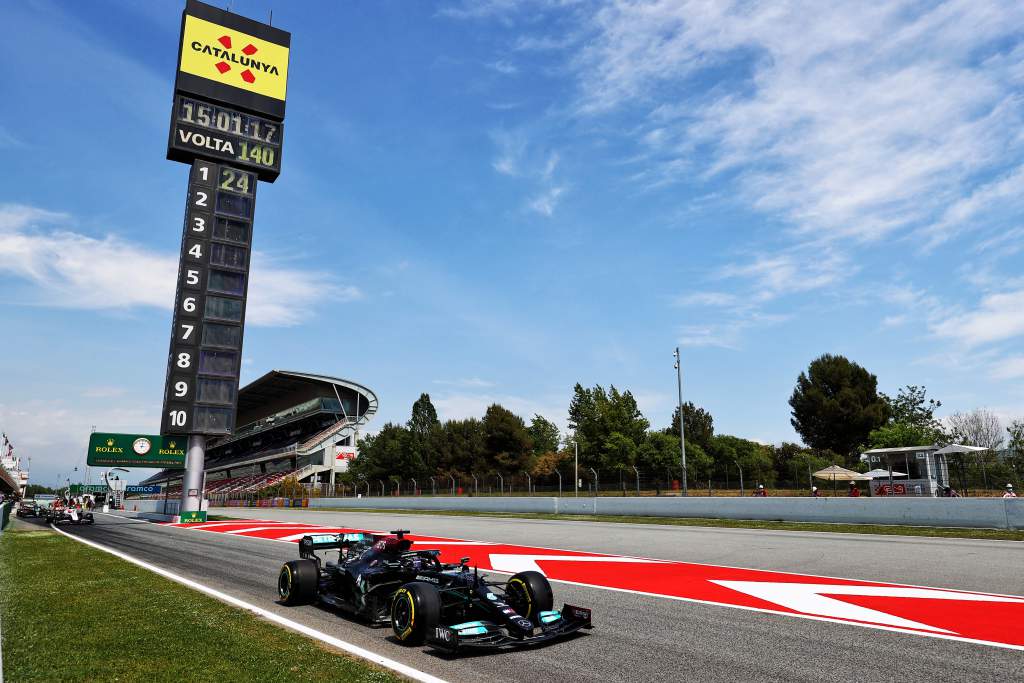
But Mercedes wasn’t certain it was definitely a nailed-on one-stop. Forget last year being a two-stop – that was because it was held in August. But even in this more traditional Spanish Grand Prix date of May, it had doubts – and they were based upon the fact than in the 2019 race, not everyone was comfortably able to make the one-stop work.
Maybe it would be so again here – in which case Mercedes preferred to give itself the strategic flexibility of two sets of mediums. That turned out to be the winning approach. Even Mercedes thought it would be a one-stop going in, but not with the overwhelming belief of Red Bull.
Ironically, the two-stop was made more sure by Verstappen winning out in the macho territorial battle with Hamilton down to Turn 1 in the opening seconds of the race. Because once in the lead and free to choose the pace (because of the big 1.2s pace difference needed to overtake around here), Verstappen chose to run far harder than what in hindsight was feasible for a one-stop in a Red Bull which is more aggressive on its tyres than a Mercedes.
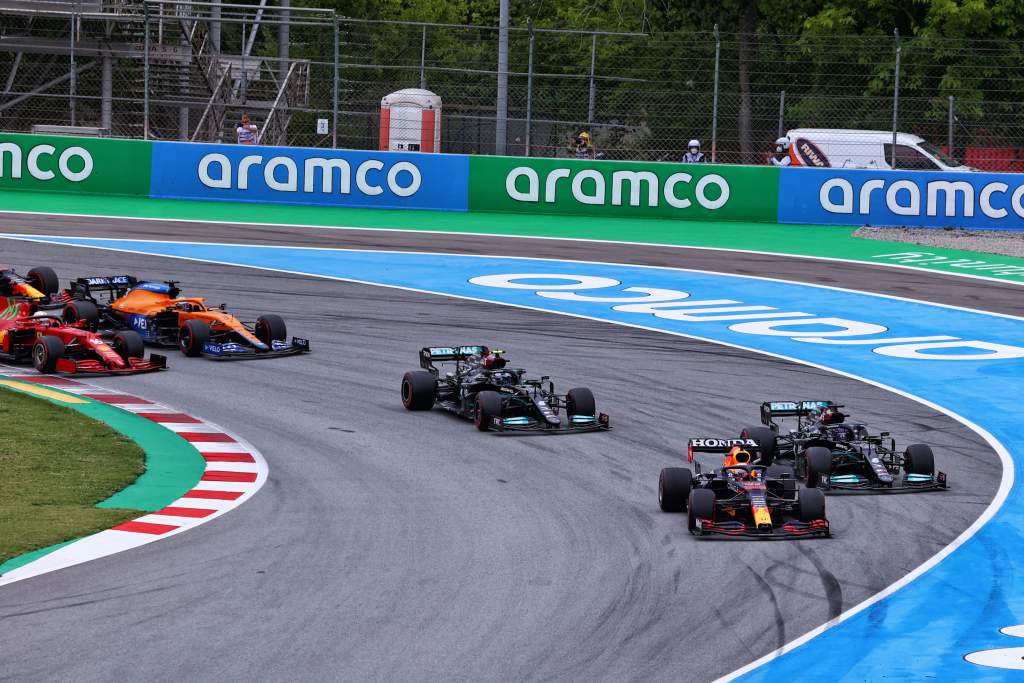
Hamilton went with him – and together they pulled out such a big gap on the field behind that it created the track space behind them for Mercedes to throw the dice with a second stop. Which is what trapped Verstappen into a nightmare re-run of Budapest 2019, leading but with far too many laps left to hold on against a much fresher-tyred car.
In the final stint of Bahrain this year Hamilton was in a similar situation to that facing Verstappen here and he did manage to pull it off – but it’s more feasible to do that in a car that’s easier on its tyres.
Hamilton is an absolute magician with how he can feel and balance the stresses between the four tyres but the Mercedes relative to the Red Bull this year just amplifies that.
That gap wouldn’t have been there for Hamilton to drop into had Sergio Perez’s Red Bull been where the team needed him to be – ie within sniffing distance of the leaders, like Valtteri Bottas was for Mercedes.
This was another similarity to Bahrain. Perez on Saturday was complaining of a painful shoulder ailment. These cars are so fast, they require absolute commitment – and that’s not something he could give in qualifying, which left him starting from eighth on the grid. He was never going to be able to support Verstappen’s victory bid from there.
By contrast Bottas – 0.1s slower than his team-mate rather than 1s – was there potentially ready to put a strategic pincer on Verstappen.
If Hamilton had won the start from pole, might he have set a slower pace that could have made a one-stop more feasible? Perhaps, but ironically the way it played out made his victory easier. It was all about how each car used its tyres.
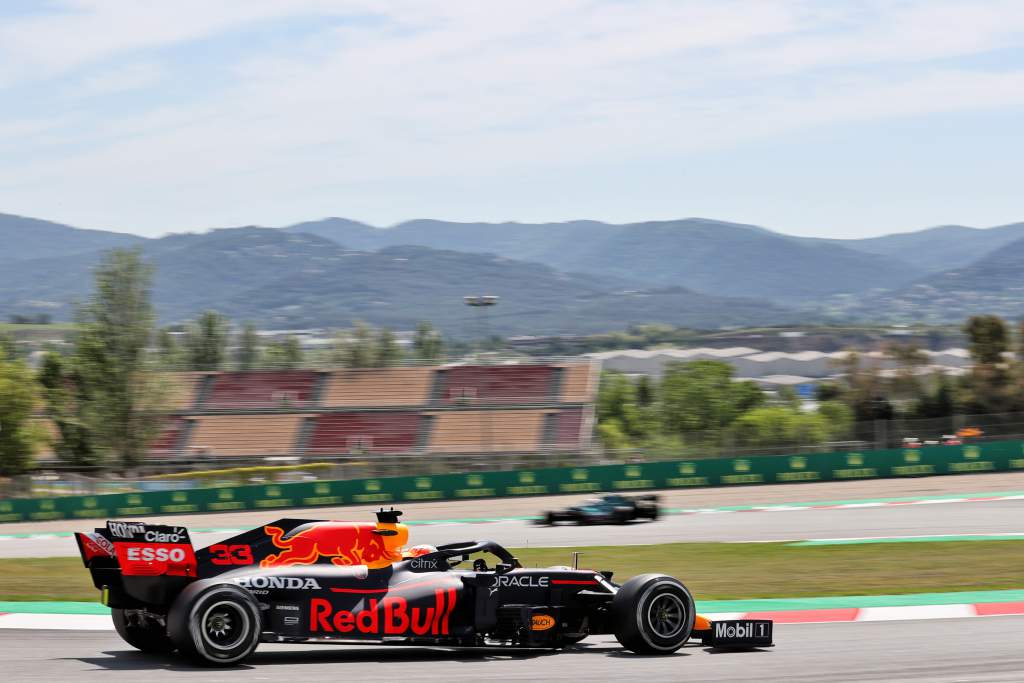
Red Bull came into the weekend knowing its tyre deg relative to Mercedes was a potential problem. Which was why it ran Friday with a higher downforce rear wing which would have looked after the rear tyres better and kept that thermal degradation under control.
But Friday running showed Red Bull would have been sitting ducks to the Mercedes on the pit straight with such a wing, even if it had been faster over the lap. So the wing with the cutaways on the outboard edges was used instead. Less speed-costing drag. But less tyre-protecting downforce too.
“I’m in the position that I’m in because I don’t get too aggressive when I don’t need to be” :: Lewis Hamilton
In a further irony, team play at Mercedes played its part in losing Hamilton the start from pole to Verstappen – which in hindsight was Mercedes’ lucky break.
“Valtteri was starting third,” Hamilton recounted, “and the goal was to work as a team, so after the start I stayed left. In hindsight I could’ve pulled across [on Verstappen] but I didn’t.”
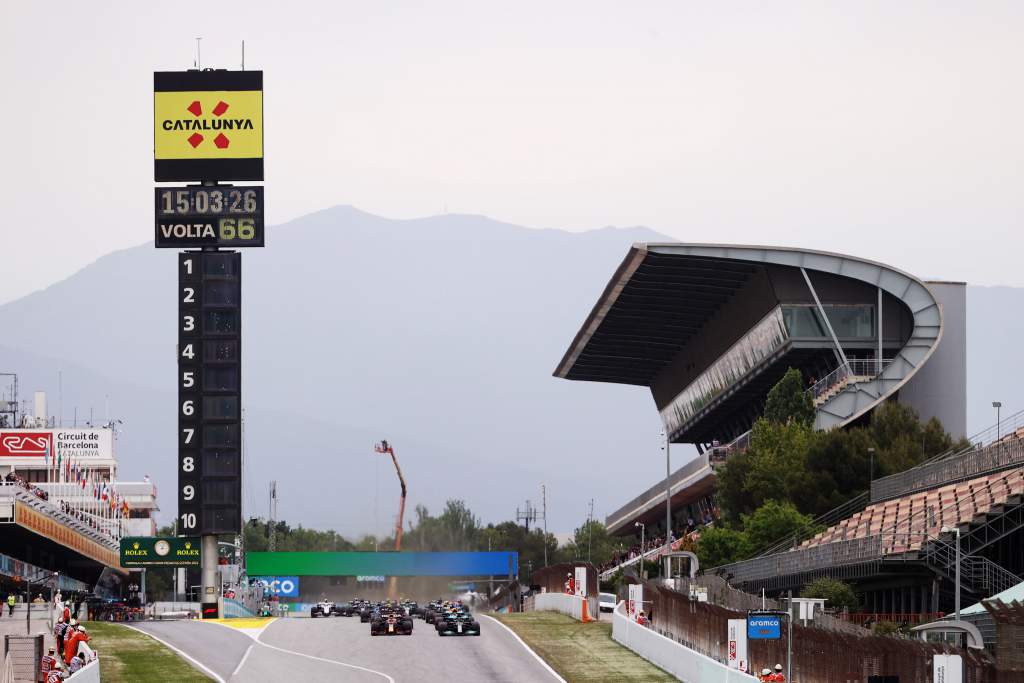
It gave the Red Bull driver the inside line and the momentum to brave it out – Hamilton forced to get out of the gas through the Turn 1-2 transition to avoid contact. Max had won the battle of the moment, but in hindsight had put himself in position to lose the war of the afternoon.
“I just made sure I gave as much space as I could to Max,” recalled Hamilton of his thought process once the Red Bull was alongside.
“In my mind, it’s always a marathon, not a sprint, so I’m just always thinking the long game and sure, you could be a little bit more aggressive.
“Do I need to? Well, I’m in the position that I’m in because I don’t get too aggressive when I don’t need to be. As soon as we got passed in Turn 1, I was like, ‘OK, switch into a different mode’.
“It was actually a really good day. I learned a lot about Max today, perhaps more than all the other races put together. This has been a good one in that sense…
“When you are with people on track you get to see different things and watch closely and obviously I was following relatively closely and I learned a lot about his car and how he uses it, so it was a good race in that respect.”
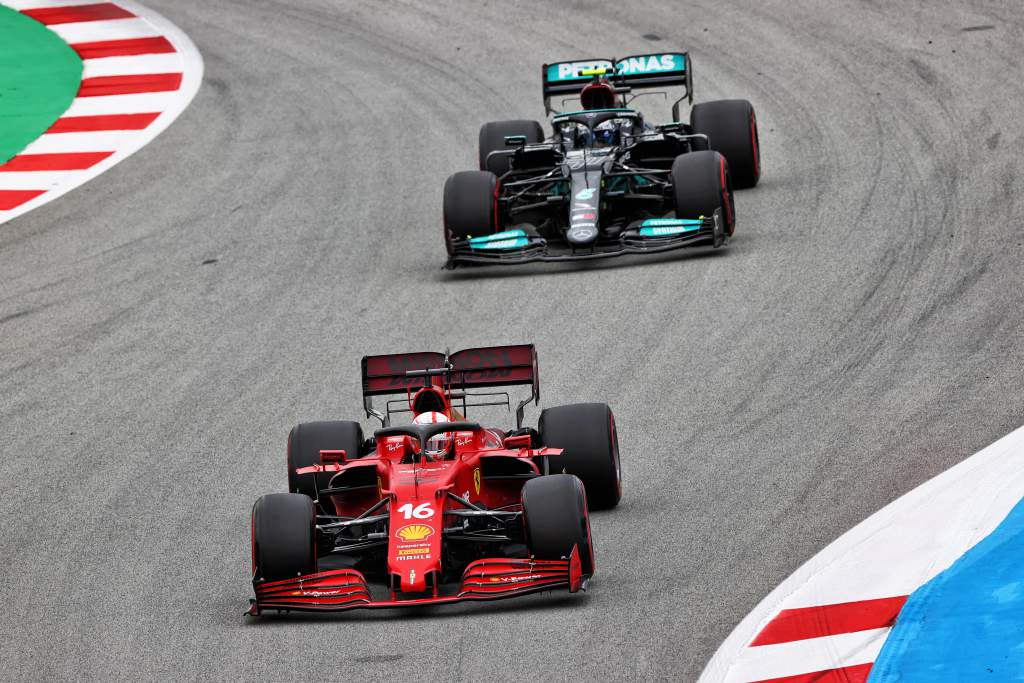
Hamilton’s loss of momentum in lifting off forced the closely-following Bottas to do the same – which gave Charles Leclerc the opportunity to stay committed around the outside of Turn 3 to go third.
This was potentially disastrous for Bottas, stuck now behind the slower Ferrari as the lead two pulled away at up to 1s per lap. Bottas made a few DRS attempts into Turn 1 but couldn’t make it work.
By the end of the seventh lap they were over almost 10s behind Verstappen and Hamilton. Which was set to have made Bottas just as ineffectual in the strategy game as Perez (who was at this moment stuck down in sixth, trying to find a way past Daniel Ricciardo’s McLaren).
“It’s insane, man. They have so much more grip” :: Max Verstappen
But then came a safety car, for Yuki Tsunoda’s broken-down AlphaTauri. Which did a couple of important things: in wiping Bottas’s big deficit reasonably close to the first pit stop window, it brought him back into strategic play, just as soon as he could undercut Leclerc (which he did on lap 23).
It also extended the necessary stint length for Verstappen, for he’d need to build the gap to drop into all over again. Which, with a car harder on its tyres than its rival was the very last thing Verstappen needed.
Red Bull would have liked to have kept Verstappen out longer than lap 24, so as to minimise the second stint of what it was still assuming was a one-stop race. He’d cleared the gap to the midfield cars by then, but more laps would be better. It wasn’t a choice that was open to them.
Verstappen’s tyres began dropping out of their operating window on the 23rd lap. It came on very suddenly. On the 24th lap the grip reduction was drastic and Verstappen signalled he was coming in! Which was why his tyres (mediums) weren’t quite ready and the Red Bull stop was 4.2s rather than the usual sub-2s.
Hamilton let rip once Verstappen pitted and had Mercedes chosen to pit him then, he had just enough margin to have maybe jumped his rival, especially as the Verstappen pit delay brought him out into a bit of traffic.
But the Mercedes pitwall believed it had a better plan. The next lap undercut would have been marginal, particularly given that Mercedes stops are not the fastest and that the Red Bull switches its tyres on instantly.
Better, Mercedes reasoned, to maximise the grip advantage Hamilton would have in the next stint so as to force Verstappen into a Budapest 2019 situation: surrender track position or be forced to stay out on ever-worsening grip against a fresher-tyred Mercedes.
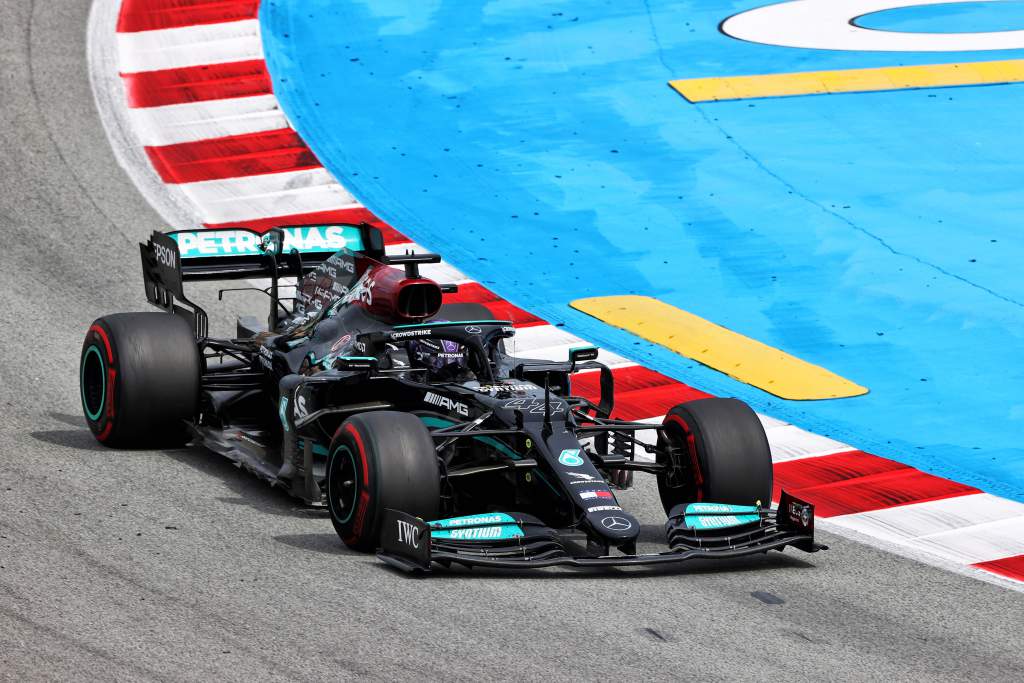
So it kept Hamilton out there for another four laps after Verstappen, fitted him with one of those sets of mediums and – knowing he was now going to two-stop – instructed Hamilton to push hard into what was a 5s deficit to Verstappen as he rejoined.
Red Bull surely knew what was in store now as Hamilton landed a relentless flurry of blows – lapping up to 1.5s per lap faster until the deficit was gone by the 34th lap.
“It’s insane, man,” called out Verstappen on the radio, “they have so much more grip.” His tyres were by now 10 laps old versus the six of Hamilton and on a car which eats into them faster.
“I could see it coming,” said Max. “Already at the end with the softs he was faster and when we put on the mediums he had a lot more pace, he could just stay within one second, so there was not much we could have done.
“They went for another stop and then I knew it was over. I was already struggling with the tyres and he was just getting closer and closer, so I was a bit of a sitting duck.”
But even that advantage of Hamilton’s wasn’t enough to make an on-track overtake a done deal.
“I was about to, I think, have a shot before I pitted right at the end and I was really conflicted,” said Hamilton. “Do I come in or do I ignore the call and stay out? Obviously, I did what the team asked.”
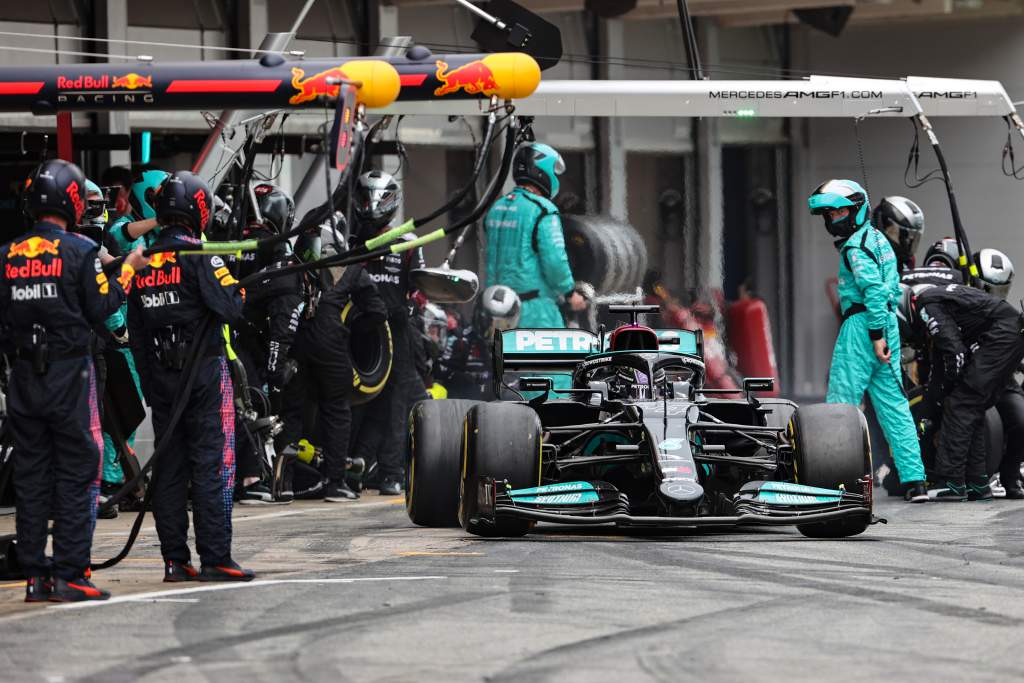
Mercedes pulled the plug on lap 42 for the next set of new mediums after a stint of just 14 laps, with 24 laps still to go. It easily had enough of a gap behind to do it, Hamilton losing a place only to Bottas. He emerged 22s behind the Red Bull. Game most definitely on.
Knowing what the two-stop game probably was now, should Red Bull have anticipated it and dropped into the gap before Mercedes had the chance to? It would have been brave to give up the lead, knowing that had it done so Mercedes would likely have left Hamilton out there.
Furthermore, all Verstappen had left were a set of softs. Which would be quick for two or three laps and then drop much faster than the mediums.
One stop was the wrong strategy on the day. Red Bull had committed to it, Mercedes hadn’t. But that wasn’t the crucial difference
“I don’t think we’d have had the speed to have caught them if we’d done that,” explained Verstappen. He was almost certainly right. The Red Bull didn’t have the tyre durability – or the appropriate tyre compound – to have done that, what with the lower downforce rear wing which was the only thing preventing it being overtaken on the straight.
So Verstappen sat there, a sitting duck leader. Even Bottas was beginning to close him down as the Mercedes’ mediums held on better.
In fact Bottas inadvertently cost Hamilton around 1.5s by not moving aside for him down the main straight – as Hamilton didn’t quite get DRS on him – and waited instead until the approach of Turn 10. Bottas was in the process of trying to pull enough time over Leclerc to make his own second stop – which he would later do.
After his stop, it took Hamilton only 17 laps of the available 24 to catch and pass Verstappen. As soon as he was within DRS range, he launched himself down the Red Bull’s outside into Turn 1 and pulled away. There were six laps to go.
Bottas had already made his second stop, leaving a gap for Verstappen to do the same and thereby get onto those new softs which would allow him to take the point for fastest lap.
Leclerc’s fourth place was never under threat, Perez finally managed to nail a pass for fifth on Ricciardo only in the last few laps, with Carlos Sainz Jr trying but not quite managing to follow him through. They all ended up two-stopping.
Lando Norris had an unlucky qualifying which put him out of position, the penalty for which snowballed in the race as he spent a lot of time behind the one-stopping Alpine of Esteban Ocon who just managed to hold off Pierre Gasly’s AlphaTauri on the line, the latter having been penalised 5s for being inattentive when taking up his grid position.
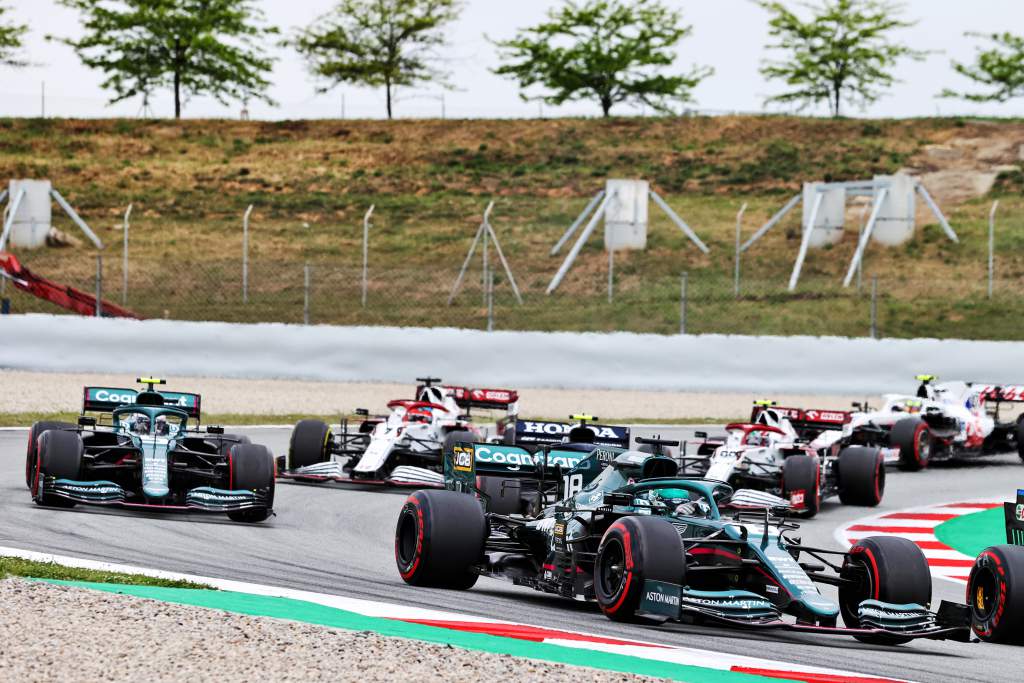
The Aston Martins were out of the points, its two drivers on much the same pace, Lance Stroll ahead, and split by Kimi Raikkonen’s reverse strategy (mediums first) Alfa Romeo.
Fernando Alonso was battling the Aston Martins and Gasly but was forced to bail late out of an attempted one-stop strategy.
One stop was the wrong strategy on the day. Red Bull had committed to it, Mercedes hadn’t. But that wasn’t the crucial difference.
This time the Mercedes was simply a faster car over a race distance even if there was nothing in it over a single lap – and both those hard facts arose from the way they worked the tyres, something which Hamilton and the team between them made clinical use of.
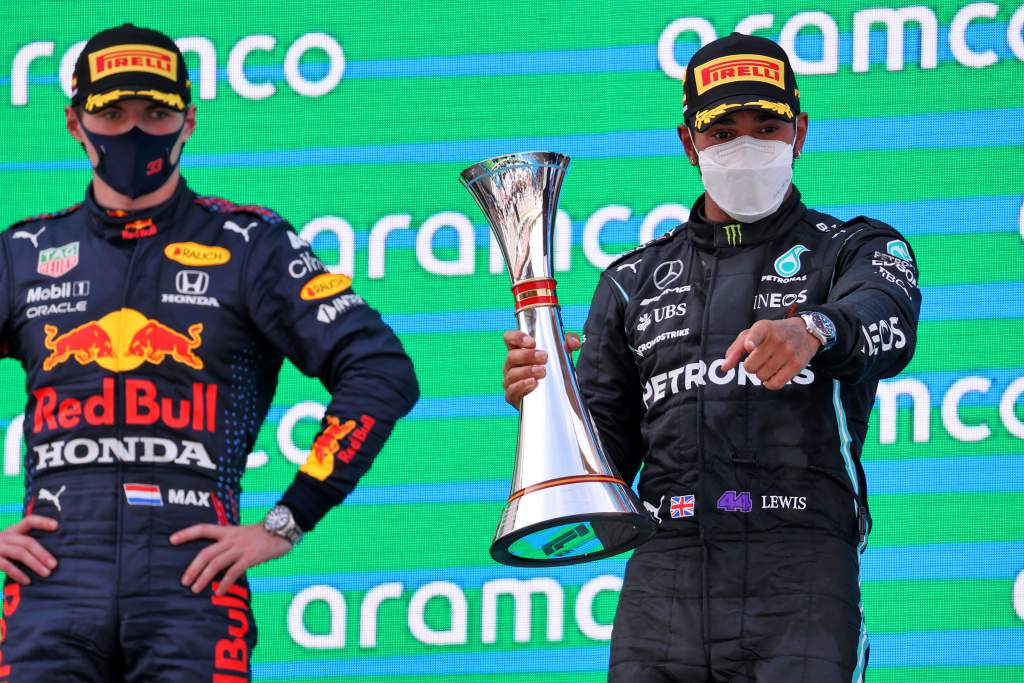
This was probably the most resounding of any victory this year – and even then the outcome hung in the balance for a little while. The fight is much closer than the results to date make it look.
“[Red Bull] do both have a potentially championship-winning car and opportunity,” said the victor. “As do we. It’s going to take everything from us, not only me bringing my A-game but the team bringing their A-game, weekend-in, weekend-out.
“Otherwise these guys will be winning.”








